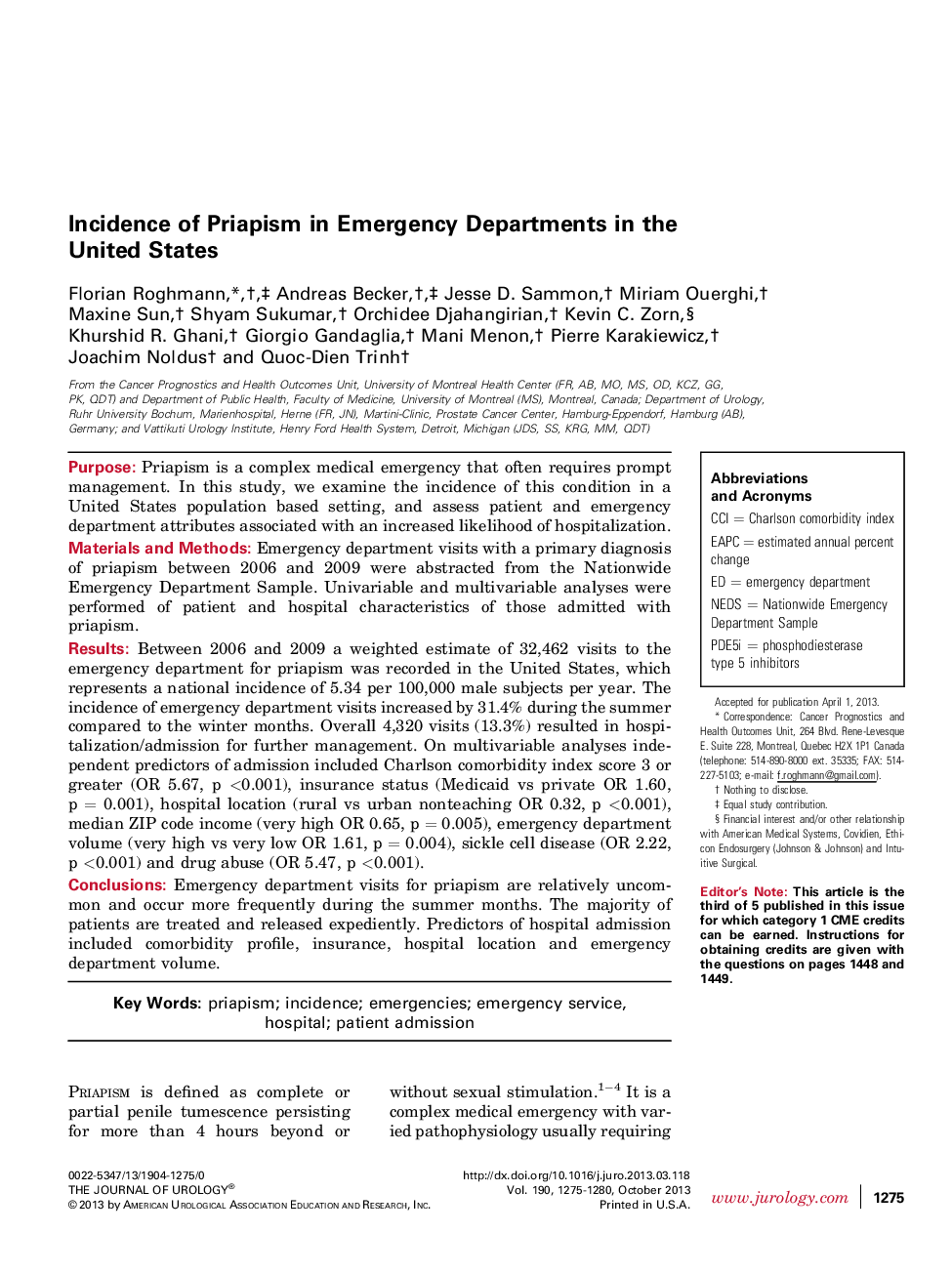| Article ID | Journal | Published Year | Pages | File Type |
|---|---|---|---|---|
| 3864166 | The Journal of Urology | 2013 | 6 Pages |
PurposePriapism is a complex medical emergency that often requires prompt management. In this study, we examine the incidence of this condition in a United States population based setting, and assess patient and emergency department attributes associated with an increased likelihood of hospitalization.Materials and MethodsEmergency department visits with a primary diagnosis of priapism between 2006 and 2009 were abstracted from the Nationwide Emergency Department Sample. Univariable and multivariable analyses were performed of patient and hospital characteristics of those admitted with priapism.ResultsBetween 2006 and 2009 a weighted estimate of 32,462 visits to the emergency department for priapism was recorded in the United States, which represents a national incidence of 5.34 per 100,000 male subjects per year. The incidence of emergency department visits increased by 31.4% during the summer compared to the winter months. Overall 4,320 visits (13.3%) resulted in hospitalization/admission for further management. On multivariable analyses independent predictors of admission included Charlson comorbidity index score 3 or greater (OR 5.67, p <0.001), insurance status (Medicaid vs private OR 1.60, p = 0.001), hospital location (rural vs urban nonteaching OR 0.32, p <0.001), median ZIP code income (very high OR 0.65, p = 0.005), emergency department volume (very high vs very low OR 1.61, p = 0.004), sickle cell disease (OR 2.22, p <0.001) and drug abuse (OR 5.47, p <0.001).ConclusionsEmergency department visits for priapism are relatively uncommon and occur more frequently during the summer months. The majority of patients are treated and released expediently. Predictors of hospital admission included comorbidity profile, insurance, hospital location and emergency department volume.
